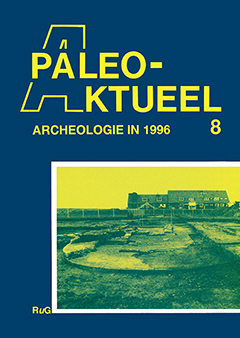EEN VROEG-MESOLITHISCHE NEDERZETTING MET TRANCHETBIJLEN BIJ LAGELAND (GR.)
Samenvatting
In 1996 a new gas pipeline was laid in the province of Groningen. The most important archaeological remains discovered during the digging activities are of medieval house-mounds and dikes, a Roman-period settlement and several Mesolithic settlements. This article describes the finds from one af these partly excavated settlements. In total 235 flint artefacts were recovered, af which 14 are retouched tools: two core-axes, a flake-axe, two burins, two points, a scraper, a truncated blade and five retouched blades and flakes. In addition, a fragment af a grinding-stone and a few unworked stones were found. Organic remains consist mainly of charred hazelnut. No hearths or other anthropogenic features were found. In the northern Netherlands, core- and flake-axes are usually placed in the latter part af the Mesolithic, after c. 7500 BP. One of the coreaxes from this site was found adjacent to a large concentration of charred hazelnuls which provided an excellent opportunity for dating. The 14C-dating produced the foliowing result: 8750±50 BP, which piaces the settlement in the early Boreal. The axe is therefore, by approximately 1000 years, the oldest dated Mesolithic axe from the northern Netherlands. Other settlements with axes will be dated in the near future.

